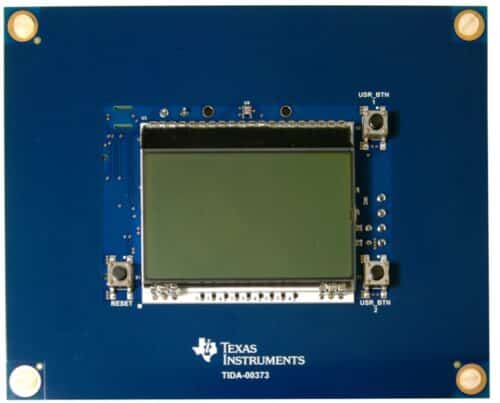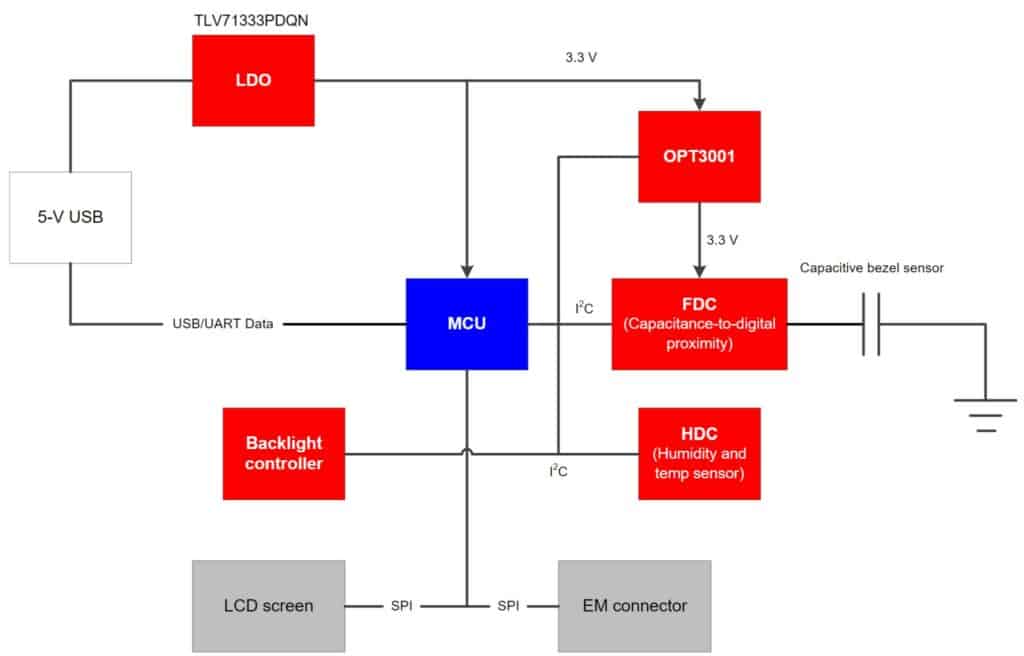Reference design for a smart backlight system that utilizes ambient and proximity sensors to control the lighting.

The backlight and smart lighting control systems help to optimize energy consumption and improve user experience. Texas Instruments (TI) has introduced a reference design for backlight and smart lighting control using ambient light and proximity sensors, making the smart backlight design process more straightforward. The design is suitable for various applications such as building automation, proximity detection, wireless solutions connectors, etc. The system designed using this reference design can conserve power and increase the lifespan of the backlight by automatically adjusting the backlight brightness based on the ambient light in the environment. A capacitive proximity sensor can also activate the system when a user approaches, leading to further power savings. The optical light sensor helps the system adjust backlight brightness and provide a comfortable view to the users.
The reference design is based on the MSP430FR5969 Microcontroller Unit (MCU) that uses ferroelectric random access memory (FRAM) instead of flash memory to make the design more power efficient. A low-power backlight controller is used in the reference design to save power and enable the dimming features of the LCD backlight using pulse width modulation (PWM) to adjust Light Emitting Diode (LED) brightness. With the use of an ambient light sensor, the reference design can dynamically modify the backlight brightness to optimize the viewing experience. The proximity sensor employs a Capacitance-to-Digital Converter FDC1004, which detects the presence of a person and compensates for environmental fluctuations. The design also includes a humidity and temperature sensor, which can be utilized for compensation in the event of temperature or humidity changes. The backlight controller, Capacitance-to-Digital Converter and humidity and temperature sensor are connected to the main MCU via an inter-integrated controller (I2C) bus.

The smart backlight features a lux sensing range of 0.01 lux to 83 klux and a Capacitive sensing distance threshold of 20 cm. The reference design operates at an input voltage of 5V. The system’s operating temperature is limited by the Liquid-crystal display (LCD) screen and ranges from –20°C to 70°C. The design comes with a dynamically adjusted backlight brightness, an Ultraviolet (UV) filter for outdoor use and an electromagnetic (EM) connector for wireless solutions. LCD, backlight panel, user, and reset buttons are located on the front of the board. The ambient light sensor is placed in the middle of the top section of the LCD panel. To prevent any errors in the light readings, the top portions of both the LCD and backlight are blacked out.
This reference design has been tested by TI. It comes with BOM, schematics, Gerber file, Printed circuit board (PCB) layout, computer-aided design/ computer-aided engineering (CAD/CAE) symbols, Assembly drawing, Schematic, etc. You can find additional data about the reference design on the company’s website.
To read more about this reference design, click here.








